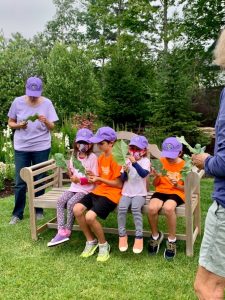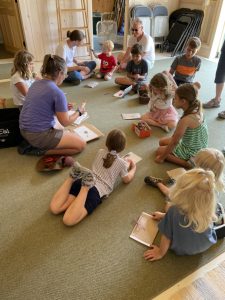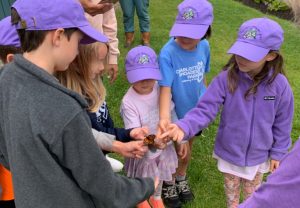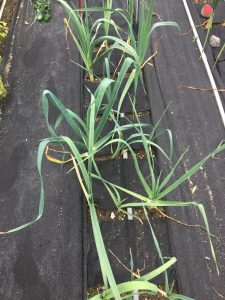Hancock and Washington Counties Master Gardener Volunteers News – September 2021
TABLE OF CONTENTS
Class of 2021 |Growing Garlic |Plan It Native | Monthly Project Highlight | MGV Pofile | Plant Sale 2022 Prep| Reporting Hours
UPCOMING DATES TO REMEMBER
Sept 24-27. Plan It Native Landscape Conference – Virtual
Oct 4 MGV Advisory Committee Meeting – ZOOM
Oct 7 Growing Great Garlic in Maine – Webinar
Oct 8 Tentative – MG Family Reunion – Outside / Extension Office/ 5 PM – more details to come
Oct 9 Rain date – MG Family Reunion
Oct 21 Apple Gleaning – more details to come
Oct 22 Rain date – Apple Gleaning
COVID Protocols
We will keep you updated on any future Covid Safety protocol changes. Watch your emails. Thank you all for being so patient and cooperative!
Class of 2021 News
The 2021 MGV class participants have been immersing themselves in their volunteer projects around the county! The class resumed this week to complete the fall portion of their training.
Webinar Offering
Growing Great Garlic in Maine!
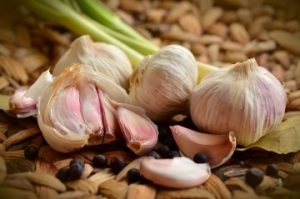
Thursday, October 7, 2021
6:00 PM to 7:30 PM
Registration deadline: 4 PM on October 7, 2021
Join Dave Fuller with UMaine Extension for a webinar session on growing great garlic in Maine. We’ll cover every step of growing including variety choice, timing of planting, scape removal, dealing with diseases and when to harvest and store your garlic. REGISTER HERE!

Plan It Native Landscapes Conference – Virtual
This Plan It Native Landscapes Conference is being presented virtually by Deep Roots, a collective impact organization of 70+ multi-sector partners working together to increase the number of beautiful native landscapes for the benefit of all life on the planet.
Join us September 22-24!
Plan It Native offers in-depth sessions with regional and national experts in native landscapes.
Field Trips
This year, Plan It Native Conference will also offer three field trips prior to the conference. Choose from three expertly crafted adventures to add to your virtual conference registration.
Virtual Sessions
Plan It Native 2021 includes three half-days of valuable information for land managers and gardeners at all scales. Don’t miss sessions on:
- design and management of native plant landscaping
- communicating the value of native plants to your community
- green infrastructure and workforce development
- transitioning gardens from purely ornamental to native and functional
- growing, gathering and cooking with native edibles
- and more!
Registration is open now for Plan It Native at planitnative.org. Recordings will be available to registered attendees for one year following the event.
Landscape Architects can receive up to 9.0 continuing education hours for attending educational sessions at the 2021 virtual conference, and up to 2.5 hours for the in-person field trips.
MGV Project Highlight ~ Hancock and Washington County
Each monthly newsletter will highlight a MGV Project. For May we are pleased to introduce:
Charlotte Rhoades Butterfly Gardens – Southwest Harbor

The lovely piece of property overlooking Norwood Cove was donated to the town of Southwest Harbor in the 1970’s to provide “a quiet place for children to play.” In 1998, under the leadership of Master Gardener, Ann Judd, the fifth grade students from the Pemetic Elementary School presented a warrant to the town for $8500 for soil and equipment to develop a butterfly garden on the property. The warrant was approved and the garden was designed by a young landscape architect, Bruce Riddell, who has subsequently earned many awards for his work. The students planted the first seedlings and the butterflies arrived to reproduce and migrate.
In the early 2000’s the annual Butterfly Release on the last Thursday in July became the major fundraiser for the garden. Over the years, the garden has also been supported by the town of Southwest Harbor and many generous donors. The property became an approved project for Master Gardener Volunteers in the early 2000’s.
The farmhouse on the property was rented by the town, with the rental income used to support the garden. In 2018 the farmhouse, which had badly deteriorated, was torn down, making room for an expanded parking area, a new Education Barn, and new garden beds. Again, Bruce Riddell was the landscape designer. The barn and beds were mostly complete by 2020 but native plants and shrubs were added to surround the parking area in 2021.
- Youth participating in the Junior Master Naturalists class
Also new in 2021 are the Junior Naturalist Program for elementary age children which meets every Friday. The program is run by Master Gardener Volunteer, Martina Dittmar, with assistance from docents Rachel Pierce, Ann Judd, and volunteer Valerie Bodner. The Junior Naturalists study pollinators, metamorphosis, insect-plant interactions, and much more. There is a new wireless monitor in the Education Barn, which can show science videos to support this program and other educational events. The new barn also accommodates many hatching cages so that students can monitor caterpillars as they grow and metamorphose into monarch butterflies to be tagged prior to migration.
Younger children also can participate with a new swing set, designed especially for them, and with Story Hour every Tuesday morning. Active and retired kindergarten teacher volunteers run this program which also focuses on insects, caterpillars, butterflies and includes a nature related activity each week.

Because of COVID, the Butterfly Release Fundraiser was changed this year to facilitate physical distancing and enhanced hygiene. Instead of food and fun for 2 hours followed by the simultaneous release of the swallowtail butterflies, the event was divided into 2 sessions at 1:00 p.m. and 3:00 p.m. After presenting their tickets, each group received their butterfly and was met by a docent who oversaw the gentle release of the butterfly onto a plant to nectar. Then the family groups were free to purchase butterfly merchandise and enjoy the free tattoos and face painting and to sample the free food, all individually prepared and packaged by volunteers. The event was sold out prior to the day of the event.
All of these enhancements were planned and implemented by MGV Extraordinaire, Ann Judd, who is also the fund raiser in chief. During the hour that I spent interviewing her, she was approached by one volunteer butterfly rearer whose caterpillars had been attacked by a strange beetle. Ann provided advice about how to research solutions to the problem. And another volunteer brought in 15 butterflies that she had reared to be tagged. And another volunteer was taught how to tag. This is a banner year for these insects and education about their survival is the business of the beautiful garden.
Submitted by MGV, Linda Dunn
Master Gardener Volunteer Profile / Article
written by: Jeff Milliken, MGV
Fabric Garden, Weedless Garden
It is all about Marjorie.
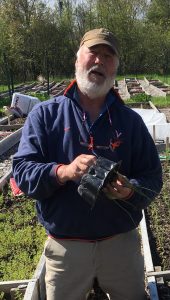
I have sensed, for years, that the people who dig and grow food are generally nice people and true to an ethic I cannot yet define. I wanted to learn from them and to be with them when I retired. My action plan was simply to sign up for a Master Gardener course. I was naive to the notion that one needed the ability to volunteer. We were to become Master Gardener Volunteers. The course was better than I had hoped. I met PhD gardeners. They lectured to us about all aspects of vegetable gardening. They are entertaining, kind, patient and brilliant. Marjorie exposed us to them. It was so much fun to learn. One concept included issues of weed control. That seemed like a good idea to me.
Unknown to me was the beginning of a process that would lead me to the fabric in my garden. We learned about compost and mulch. It seemed that they were different. Compost you build and then turn into the ground. Mulch is stuff you put on the ground to keep the weeds from growing up through the mulch. Apparently compost can be used for mulch as it too will prevent growth of weeds if laid out on the ground. Some of us had slow starts. Then we were introduced to plastic mulches of a variety of colors. You had to punch holes in them to allow plants to be planted through the plastic. It was light weight and would not last through many seasons. Made a lot of trash in the fall. This would not do.
Then I met contractor’s fabric. Very durable. Porous to water. Impervious to light. Survives years of use. Comes in rolls of 4 foot and ten foot widths. It is expensive. *
Spring begins with an appreciation of Marjorie. She is as dedicated to her calling as a person can be. She loves her work. She loves all of us. She loves smoked salmon. Without her many would be struggling.
My garden is 3000 square feet as a large rectangle, 30 feet by 100 feet. The garden has 11 rows that are 100 feet long. In early May, as the ground is beginning to warm and tiny green leaves of early weeds are appearing, the tarps come out. Tarping is a technique vividly demonstrated to be effective in class. Two tarps measuring 30 x 50 feet are spread over the garden and left for two to three weeks. They are held down by rebar that is in 20 foot lengths of pvc pipes with capped ends. The capped ends make it easy to push the rebar over the tarp surface.

The vegetable seedlings are continuing to grow in our dining room bay window until the planters moon is nigh. On a calm, breeze free morning, the tarps are folded and stored, the amendments are applied especially where the vegetable rows will go and are tilled in with a neighbor’s Toro tiller. Then the fabric is rolled out. It has been laying out through the winter at the foot of the garden. It is rugged stuff. It is designed to be the floor of french drains and roadbeds. It can handle winter. When rolled up, there had been no growth underneath it. Now the tarps have reinforced that appearance.
The challenge of rolling out the fabric is that it needs to be straight. It is heavy. Strings are laid out along the planting lines as guides and the fabric is rolled out between the strings. Soaker hose is placed so that the crop rows can be watered directly through the summer. The fabric once in place is held down by the rebar along its length so that it will not blow away. It is folded lengthwise to a width of 2 feet or three feet so that space is available for planting seedlings or direct planting seeds as the rotation from last year’s crops dictates. It has been a great deal of work. There is a large initial investment in fabric, rebar and half inch PVC pipe. All of this for no more weeding during the growing season. (See Photo)
The cucumber cages are placed on the fabric. The bean fences are rebuilt in the lines that will grow the beans. The tomato stakes are pounded in and the electric deer fence is installed on fiberglass posts around the perimeter. Let the planting begin.
Onion, shallot and leeks are planted in horizontal rows 2 feet wide. (see photo). Those rows are at one foot intervals. Between the rows are one foot widestrips of fabric so that only the seedlings grow through. The large plants, tomatoes, cabbages, cucumbers, etc are all planted between the rows of fabric.
The garlic is up by now. It too was planted in horizontal rows like the onions, shallots and leeks at one foot intervals. Fabric is laid between the shoots where it will remain for the growing season. (see photo)
The plants all seem to like it. They are all grateful to Marjorie for exposing the grower to this technique and so many more. They like the option of the grower walking on the fabric free of weeds and not needing to weed all of that space. The ground is warmer in the early spring. It is rich with earthworms.
The garden has yielded an average of 1200 pounds of produce annually. One thousand of those pounds are given to the Magic Food Bus for distribution to the Tree of Life food pantry and other neighbors. We enjoy the rest and pick it so as to enjoy the freshness of a vegetable picked a brief interval before supper.
Come autumn, the cucumber cages will be removed. The bean fence will come down again. The garlic will be planted. The soaker hose folded and stored and the fabric rolled up for another winter. It is all good fun and oh so rewarding.
Thank you Marjorie. You make me volunteer! Jeff
Product Details –
*Agtec non woven 4.5 oz Geotextile (filter fabric, medium weight)
$159
SKU A4.5FADF3x360
This soft, black 4.5oz polypropylene fabric is ideal for use in drain installations and landscaping applications where drainage, separation or ground reinforcement is needed. This fabric allows water to pass through, while holding soil and aggregate in place. Resistant to rot, chemicals, and UV degradation.
Questions for Jeff? Send them to mgvnewsletterinput@gmail.com
MGV Plant Sale Prep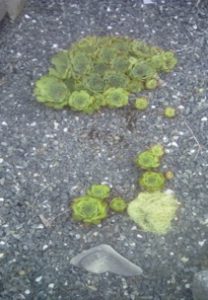
We know better than to count our chickens before they hatch, but the time is right for sending in photos of plants you plan to donate to our 2022 plant sale. Please e-mail your snapshots of perennials that you clicked before you picked along with plant name, descriptive details helpful to customers, and quantity of divisions of the plant. Your info will be safely stored until spring at: MGVnewsletterinput@gmail.com Now is also the time to put markers in the ground so we’ll know where to dig those plants in March and April.
Thanks ever so much for helping our group hatch a mighty fine plant sale in the spring! Cluck, cluck.
Did you know? 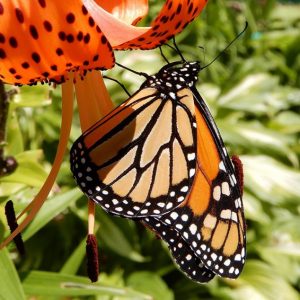 Our On-line Publications site has a whole new look!
Our On-line Publications site has a whole new look!
University of Maine Cooperative Extension’s publications and books help “extend” University of Maine resources to the Maine public:
VISIT ONLINE HERE!
Please be reminded to REPORT your Master Gardener volunteer Hours monthly
August/September Hours are due NOW – REPORT HERE

